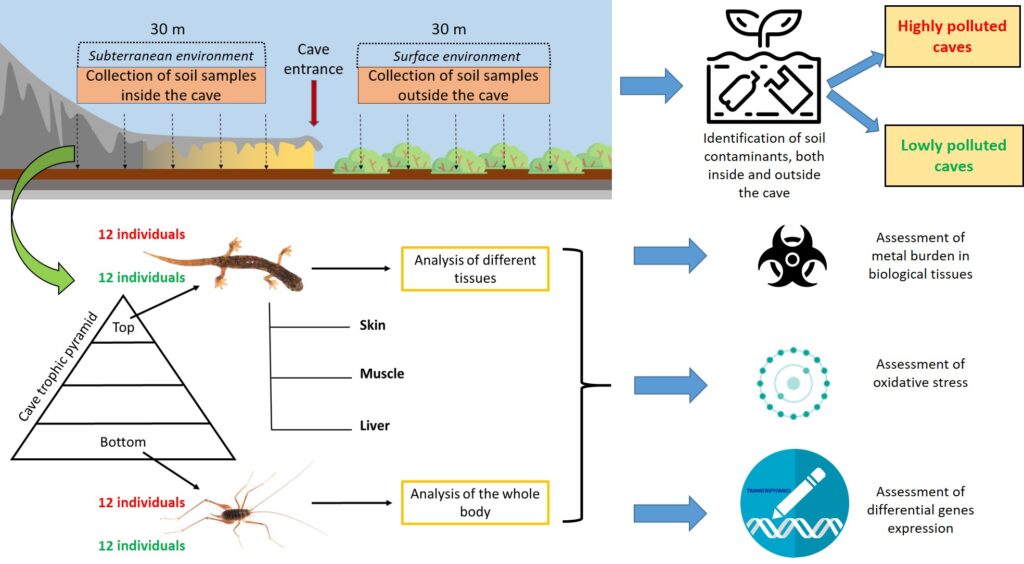METALCAVE: A new project on pollution in subterranean environments
We recently got funds for this project, which aims to assess the presence of trace metals in cave soil and whether they are stored in animals tissues. The project will start in December 2024. Here a breif description.
Subterranean environments are widespread on Earth, yet we have a poor knowledge of their biota. These environments are characterized by peculiar characteristics that make them unique but also extremely sensitive to human induced effects. Nonetheless, they hold a very rich and unique biodiversity. A few studies focused on assessing the potential pollutants of different nature into subterranean environments; surprisingly those focusing on metal contaminants are quite scarce. Furthermore, the majority of those studies analysed groundwater, while cave soil has been usually neglected.
With this project we aim to perform the first assessment of metal contaminants in soil and organisms from different caves, as well as from surface soil in the proximity of each cave entrance, in order to evaluate the flux and accumulation of these contaminants across environments and trophic webs. To reach this goal, we will assess patterns of metal accumulation and gene expression in two facultative cave species living in highly polluted and lowly polluted (i.e., control) caves of the Apennines: the Italian cave salamander Speleomantes italicus (Amphibia; Plethodontidae) and the Laetitia’s cave cricket Dolichopoda laetitiae (Insecta; Rhaphidophoridae).
These two species often live in syntopy and occupy different positions in the subterranean trophic web; cave salamanders are top predators, while cave crickets are saprophagous that occupy the lowest trophic level.
We will choose 20 caves (at least 10 inhabited by each target species) and measure the concentration of multiple metal contaminants in cave soil, as well as in the soil from the surroundings of the cave entrance. Caves are chosen according to their vicinity to pollution sources (e.g., quarry, roads). To assess the effects of metal pollution, we will analyse the metal-tissue burden and gene expression differences in both S. italicus (n=24) and D. laetitiae (n=24) living in two highly polluted and two lowly polluted caves (6 individuals per species from each cave). For each salamander, we will analyse gene expression differences by transcriptomics analysis (RNAseq) of three key tissues involved in metal uptake (skin) and metal storage and detoxification (muscle and liver). For the same tissues, we will measure the concentration of the biologically-available and potentially toxic metals by Mass Spectrometry (ICP-MS). For crickets the metal burden and transcriptomic differences will be assessed on the whole-body tissue.
Results from this project will elucidate the metal contaminants fluxes across the interface between surface and subterranean ecosystems, and their potential impacts on biodiversity, including the patterns of bioaccumulation among cave organisms and across trophic webs, and the mechanisms used by organisms to deal with chronic metal exposure.


